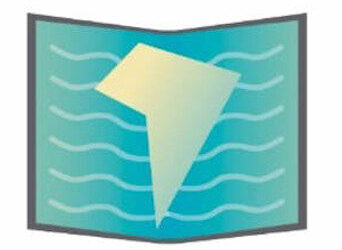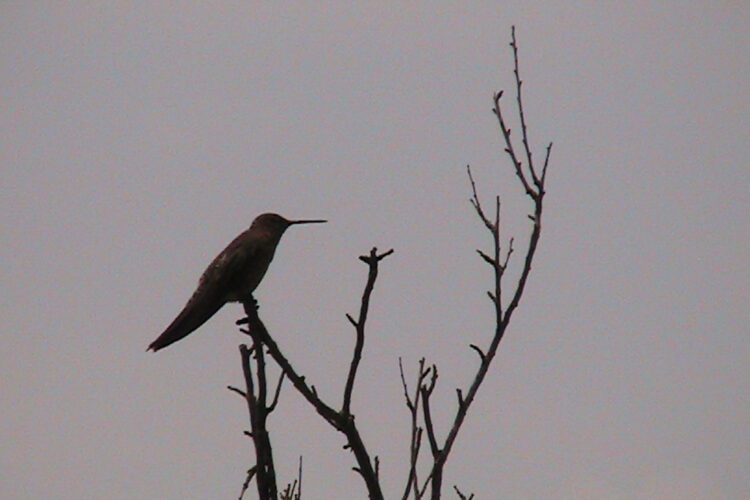Abril lluvias mil es un antiguo dicho, muy común en el sur de Abya Yala, para referirse al lluvioso clímax del otoño, cuando las estaciones estaban bien definidas y el equinoccio era una fiesta que celebraba el inicio del año andino que correspondía al Mushuk Nina, o fiesta del fuego nuevo. En virtud de la verdad, hay que reconocer que este dicho no es propio de nuestro continente, sino que fue traído por los invasores españoles desde Castilla, donde esta frase, Abril, aguas mil, hacía referencia a las abundantes lluvias de primavera que caían en ese español territorio. Porque ésa es otra gran verdad, existe una similitud, una simetría en los equinoccios que marcan tan claramente las medias estaciones, con un sol que ya declina en el sur, mientras reaparece en el norte.
Ya sea que el sol se aleje o se acerque, éste es un tiempo de florecimiento, porque, si bien en el otoño los árboles caducos botan sus hojas para abrigar y alimentar sus raíces durante la larga noche del invierno, son muchos los otros, de follaje perenne, que florecen, las hierbas también nos honran con sus flores y frutos silvestres, destinados a alimentar las migraciones transatlánticas de las aves y la vida cotidiana de polinizadores e insectos. Ya sea otoño o primavera, la tierra florece y la gente cosecha y aprovecha las primeras y las últimas lluvias del invierno para preparar y alimentar el terreno que nos dará de comer a personas, animales, aves y bichos.
Abril, lluvias mil decían aquí y allá y era verdad, sin embargo, hace algunos años ya las lluvias no llegan; que la corriente del niño, que la de la niña, que la capa de ozono, que el calentamiento, que las industrias y el crecimiento; son múltiples las causas y nefastas las consecuencias; la media estación desaparece y esa ecuanimidad que da el equilibrio entre el día y la noche se desvanece más y más, ya no es fresco el aire, sino que abrasa o congela, la floración de los árboles es errática y cuándo las aves llegan, a reponer energías durante sus largas travesías, no encuentran sus frutos ni sus semillas.
Se fueron las lluvias, desplazadas, igual que las gentes, por la minería y los monocultivos que se roban el agua y matan a pájaros e insectos con sus agrotóxicos. Ya no hay lluvias y los lagos se secan, mientras los ríos se represan, cortando su vital suministro, como aneurismas, obstrucciones vasculares que terminan gangrenándose, muriendo hasta secar por completo todo un ecosistema. No hay lluvias, no hay agua, pero hay gaseosas, cerveza, tequila, pisco y paltas. El agua “potable” de las ciudades sabe a cloro con tonos de flúor y toques de arsénico y no creas que se puede beber, es veneno. Pero hay mucho cobre y oro y petróleo en vez.
Ya no llueve, pero diluvia y en pocas horas pareciera que el mar se desata desde el cielo, arrasando las poblaciones de las secas quebradas, que se inundan en cuestión de suspiros con las miles de lluvias que deberían caer en abril y que, desordenadas y caóticas, arrasan en cualquier momento y lugar. El torrente corre descontrolado por donde antes fluía suave, contenido, acunado por troncos y raíces de árboles milenarios, que fueron arrancados para convertirlos en muebles, pisos y paneles de lujo, luego reemplazados por brotes foráneos, invasores de ácida sombra que no alimentan, y así fue como Abril, lluvias mil se transformó en un mal chiste de los tontos inocentes de abril.
April thousand rains is an old saying, very common in the south of Abya Yala, to refer to the rainy climax of autumn, when the seasons were well defined and the equinox was a party that celebrated the beginning of the andean year that corresponded to the Mushuk Nina, or festival of the new fire. By virtue of the truth, it must be recognized that this saying is not typical of our continent, but was brought by the Spanish invaders from Castile, where this phrase, April, thousand waters, referred to the abundant spring rains that fell in that Spanish territory. Because that is another great truth, there is a similarity, a symmetry in the equinoxes that so clearly mark the half seasons, with a sun that already declines in the south, while it reappears in the north.
Whether the sun goes down or comes up, this is a time of blossoming, because, although in the fall deciduous trees shed their leaves to warm and feed their roots during the long winter night, there are many others evergreen, flowering herbs also grace us with their wild flowers and fruits, destined to fuel the transatlantic migrations of birds and the daily lives of pollinators and insects. Whether it is autumn or spring, the land blooms and people harvest and take advantage of the first and last rains of winter to prepare and feed the land that will nourish us people, animals, birds and bugs.
April, thousand rains they said here and there and it was true, however, a few years ago the rains have not come; that the current of the boy, that of the girl, that the ozone layer, that warming, that industries and growth; the causes are multiple and the consequences dire; the middle season disappears and that equanimity that gives the balance between day and night fades more and more, the air is no longer fresh, but rather scorches or freezes, the flowering of the trees is erratic and when the birds arrive, at replenish energy during their long journeys, they do not find their fruits or their seeds.
The rains are gone, displaced, like the people, by mining and monocultures that steal water and kill birds and insects with their pesticides. There is no more rain and the lakes dry up, while the rivers are dammed up, cutting off their vital supply, such as aneurysms, vascular obstructions that end up becoming gangrenous, dying until an entire ecosystem completely dries up. There is no rain, there is no water, but there are soft drinks, beer, tequila, pisco and avocados. The «drinking» water in cities tastes like chlorine with notes of fluoride and hints of arsenic and don’t think you can drink it, it’s poison. But there is a lot of copper and gold and oil instead.
It no longer rains, but it pours and in a few hours it seems that the sea is unleashed from the sky, destroying the populations of the dry ravines, which are flooded in a matter of breaths with the thousands of rains that should fall in April and that, disorderly and chaotic, they devastate at any time and place. The torrent runs uncontrollably where it used to flow smoothly, contained, cradled by the trunks and roots of ancient trees, which were uprooted to turn them into luxury furniture, floors and panels, later replaced by foreign shoots, invaders of acid shade that do not feed, and that’s how April, thousand rains became a bad joke of april’s fool.








